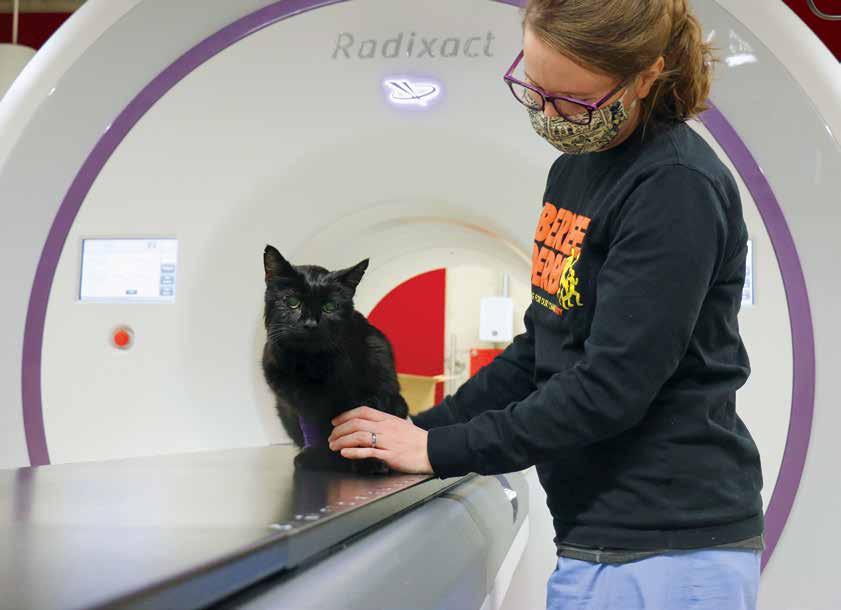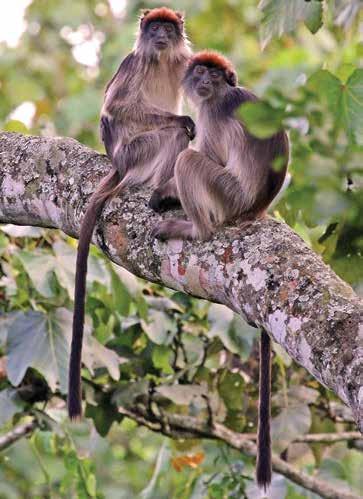Comparatively Speaking International Team Discovers First Two Relatives of Rubella Virus When they looked closer, they saw that it was quite similar to rubella virus, just one short word, or amino acid, different in a key region of the genome that lets viruses bind to host cells. (Rustrela virus has a few more amino acid differences.) The researchers are currently working to further study both viruses in the lab. Rubella, also known as German measles, is an airborne virus that has largely been eradicated thanks to an effective vaccine, though pockets of disease still exist throughout the world. It can cause rash and flu-like symptoms. During pregnancy, the virus can cause miscarriage, stillbirth, or fetal development defects — as many as 100,000 children each year are born with congenital rubella syndrome and may be deaf, blind, or experience heart problems. Rubella has not been found in animals, which has made it easier for the World Health Organization to target CHARLES J SHARP / CC BY-SA
At night in a Ugandan forest, a team of American and African scientists take oral swabs from insect-eating cyclops leaf-nosed bats. In a necropsy room near the Baltic Sea, researchers try to determine what killed a donkey, a Bennett’s tree-kangaroo, and a capybara at a German zoo — all of them suffering from severe brain swelling. Neither team was aware of the other, yet they were both about to converge on a discovery that would forever link them — and help solve a long-enduring mystery. They were each about to find two new relatives of the rubella virus, which had been, since it was first identified in 1962, the only known member of its virus family, Matonaviridae. In Africa, this relative is ruhugu virus, named for the place where it was found, Ruteete Subcounty, and the word in the local Tooro language that describes the flapping of bat wings in the hollow of a tree: obuhuguhugu. The virus found in Germany, slightly different from rubella and ruhugu, is rustrela, named for the nearby Strela Sound. The two teams have now collaborated to publish their findings in Nature. They describe the new viruses, their similarities to rubella virus, and their differences. Neither of the new viruses is known to infect people. “Why has it been so challenging to track down the origins or relatives of rubella virus?” asks Tony Goldberg, a University of Wisconsin–Madison professor of epidemiology at the School of Veterinary Medicine, who led the American efforts. “Why did it take 206 years from the time George Maton first described rubella, and why did two teams working independently figure it out within three months of each other, get lucky enough to learn of one another’s results, and then lucky enough to work together to publish?” It isn’t because people haven’t tried, Goldberg says. It may be that advancing technology has made it easier — rubella virus genomes are notoriously difficult to work with, and the new viruses share these characteristics.
It may just be serendipity. Goldberg’s team — whose efforts in the new study were led by his former graduate student Andrew Bennett PhD’20 — wasn’t even looking for rubella-like viruses. (Bennett, who earned his doctorate in Comparative Biomedical Sciences, is now employed as a scientist for the Naval Medical Research Center.) They were, pre-COVID-19 pandemic, working with their Ugandan colleagues to look for coronaviruses carried by bats. Ruhugu virus popped up as a strange string of letters in the giant analyses of genetic code the team was performing on samples collected from the bats. 16
On Call | Spring 2021
Ugandan red colobus monkeys in Kibale National Park. With the discovery of two relatives of rubella virus, including a virus found in bats in the park, scientists and others stress the importance of protecting Uganda’s forests from human encroachment.






